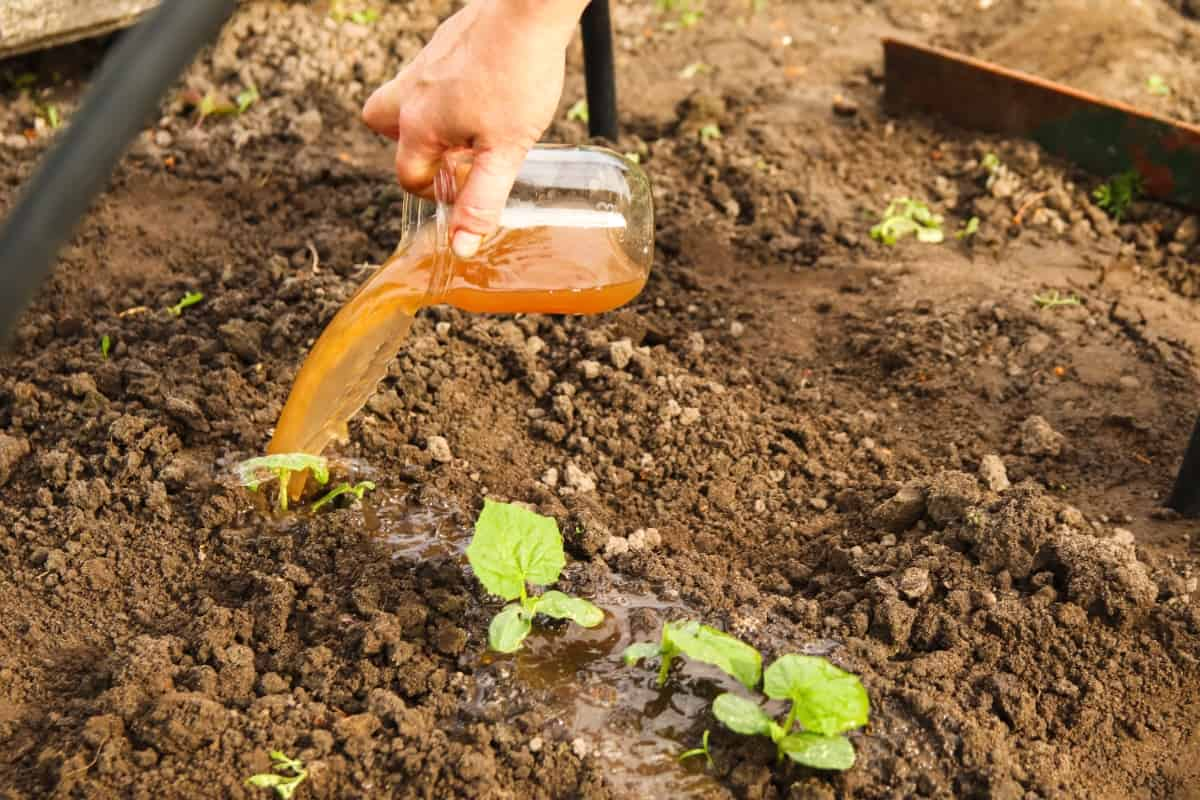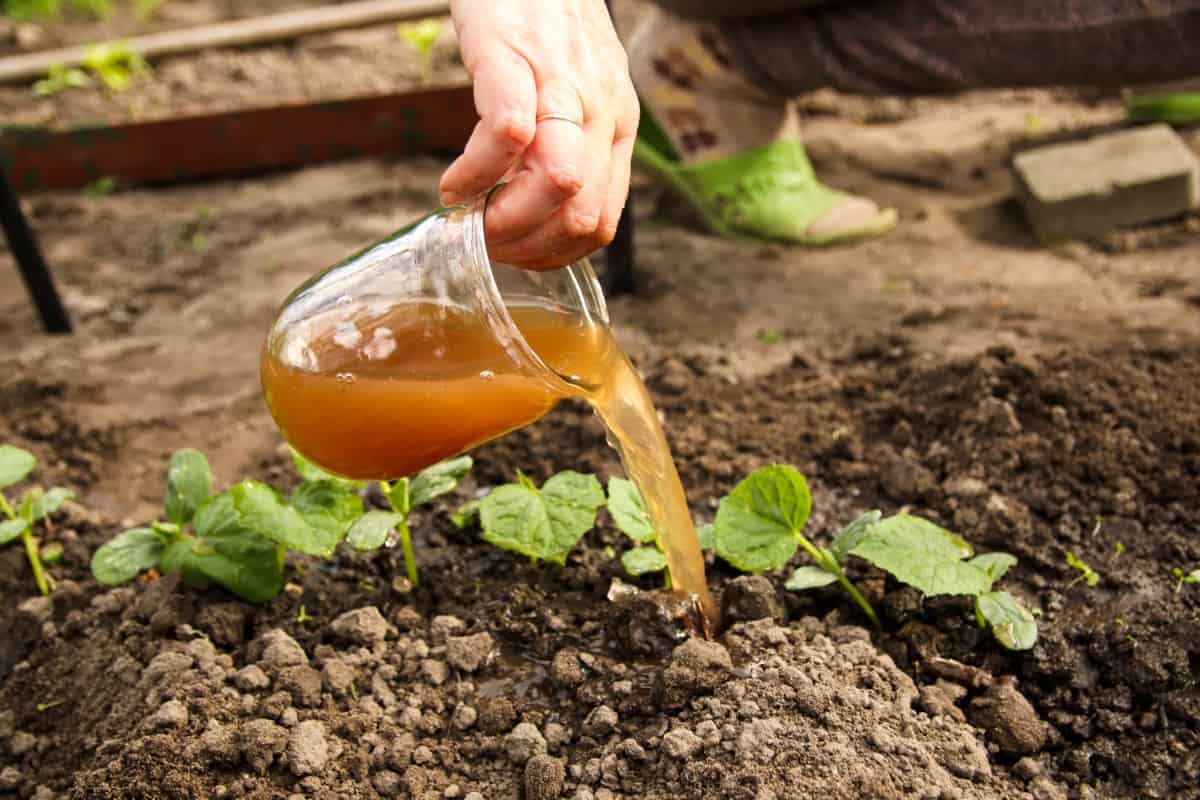Making Panchagavya at home comes with a myriad of benefits that cater to both plant growth and overall soil health. By using this organic concoction, you are ensuring a natural and sustainable way to boost the immunity of plants, making them more resilient against diseases and pests.

Making Panchagavya at Home
Overview of Panchagavya
What is Panchagavya?
Panchagavya is a powerful organic product that originates from the five key components of the cow – milk, curd, ghee, urine, and dung. These ingredients come together to create a potent elixir with numerous benefits for plants and soil health.
The Importance in Agriculture and Medicine
In agriculture, Panchagavya plays a vital role in promoting plant growth and improving soil health. Enhancing soil health with Panchagavya is a sustainable practice gaining popularity among organic farmers. Moreover, in Ayurveda and traditional medicine practices, Panchagavya is revered for its medicinal properties.
Historical Background and Cultural Significance
Origins and Traditional Knowledge
Panchagavya holds a rich historical background deeply rooted in ancient Indian traditions. Its origins can be traced back to the Vedic era when it was considered a sacred concoction with healing properties. The traditional knowledge of Panchagavya has been passed down through generations, highlighting its significance in Ayurveda and organic farming practices.
Role in Ayurveda and Organic Farming
Panchagavya in Ayurveda is revered for its therapeutic benefits and holistic approach to health and wellness. It is believed to promote overall well-being when consumed internally or applied externally. Furthermore, Panchagavya’s role in organic farming showcases its sustainable agricultural practices that prioritize soil health and plant nutrition without relying on harmful chemicals. Organic farming with Panchagavya offers a sustainable and holistic approach to agriculture, promoting plant growth, soil health, and overall well-being.
Key Ingredients
The Five Main Components
Panchagavya, the organic elixir, comprises five main components derived from cow products: milk, curd, ghee, urine, and dung. Milk provides essential nutrients like proteins and vitamins crucial for plant development. Curd contains beneficial microbes that aid in improving soil fertility and promoting root growth.
Ghee acts as a natural pesticide with its antimicrobial properties. Urine is rich in nitrogen and other micronutrients necessary for increasing crop yield. Dung serves as a potent source of organic matter, enriching the soil with beneficial bacteria and enzymes.
Additional Enhancing Ingredients
To enhance the efficacy of Panchagavya further, additional ingredients like jaggery, bananas, coconut water, and neem leaves are also used to boost its nutrient content and bioactivity. Some traditional recipes include herbs like neem and basil for their pest-repelling properties. Others incorporate jaggery or sugar for fermentation purposes.
Benefits
For Plant Growth and Soil Health
Panchagavya offers a multitude of benefits for both plant growth and soil health. When used as a fertilizer, it helps in improving soil structure, enhancing nutrient content, and promoting beneficial microbial activity. Moreover, the medicinal properties of Panchagavya make it a versatile solution for various health issues in plants. By boosting the immunity of plants, it ensures better overall growth and productivity.
Medicinal Uses and Health Benefits
Panchagavya also has numerous health advantages for humans. Consuming Panchagavya products like Ghee or Milk is believed to have detoxifying effects on the body, boost immunity, and promote overall well-being.
In case you missed it: How to Make Homemade Fertilizer for Polyhouse Crops: A Comprehensive Guide for Beginners

Preparing Your Panchagavya
Gathering the Ingredients
Let’s start by gathering the essential ingredients needed for this organic concoction. You’ll need cow dung, cow urine, milk, curd, ghee, jaggery, and water to begin the process. To create your own Panchagavya at home, the first step is to gather all the key ingredients. Make sure to get water that is free from chlorine or any harmful chemicals.
Step-By-Step Preparation Process
- First, gather all the key ingredients needed for making Panchagavya. Ensure you have fresh cow dung, cow urine, milk, curd, ghee, and water as per the traditional recipe.
- Next, mix these ingredients in the right proportions according to a trusted recipe or expert guidance. The ratio is crucial for the fermentation process to yield effective results.
- Place this mixture in a clean and well-ventilated container for fermentation. Please keep it away from direct sunlight and extreme temperatures to allow beneficial microbes to thrive.
- Stir the concoction periodically during fermentation to ensure an even distribution of microbes and nutrients. After an adequate fermenting period, strain the mixture using a cloth or filter to separate liquid from solids. Your homemade Panchagavya is now ready for use in various applications such as agriculture or natural pest control.
Application of Panchagavya
In Agriculture: Dosage and Methods
In agriculture, the recommended dosage of Panchagavya varies depending on the crop type and growth stage. Foliar spraying or soil drenching are common methods used to apply Panchagavya in agricultural practices. For fruit trees and flowering plants, a dilution of 3% Panchagavya with water is recommended for foliar spray every 15 days during the growing season.
Vegetable crops can benefit from a slightly higher concentration of 5%, applied once every week. Avoid applying Panchagavya during extreme weather conditions like heavy rain or scorching heat to ensure maximum absorption by the plants.
In-Home Remedies: How to Use
For home remedies, incorporating Panchagavya into daily routines can have several health benefits. From skincare solutions to boosting immunity, there are numerous ways to use this organic product at home. Mixing a small amount of Panchagavya with water or honey can create a simple yet effective remedy for various ailments.
Safety Measures and Precautions
Handling and Usage
Always wear protective gear like gloves when preparing or applying Panchagavya to avoid any skin irritation or inhalation issues. Be mindful of the dosage recommended for plants, as excessive use can affect nutrient imbalances in the soil. It’s important to follow guidelines meticulously to prevent any negative impact on plant health.
Understanding Potential Risks
Understanding potential risks associated with improper usage is crucial. Overuse of Panchagavya may result in nutrient toxicity, affecting plant growth negatively. Additionally, storing Panchagavya in a cool, dark place is vital to maintain its potency over time. By taking these safety measures and precautions seriously, you can harness the benefits of Panchagavya effectively while minimizing risks that may arise from mishandling this organic product.
Storage and Shelf Life
Best Practices for Storage
It’s crucial to follow some best practices to maintain its potency and effectiveness. Firstly, store your homemade Panchagavya in a cool, dark place away from direct sunlight. Sunlight can degrade the ingredients and reduce their shelf life. It’s also important to keep Panchagavya in an airtight container to prevent exposure to air, as this can cause oxidation and spoilage.
Indicators of Spoilage and Shelf Life Extension
Regularly check for spoilage signs such as unusual odors and changes in color or consistency. If you notice any of these indicators, it’s best to discard the product. Spoilage can occur due to contamination or improper storage conditions. One key indicator is a foul smell, which suggests that the mixture has gone bad and should be discarded immediately.
In case you missed it: Watermelon Fertilizer Management: A Comprehensive Guide for Beginners

Another sign of Panchagavya spoilage is the presence of mold or unusual growth in the solution. If you notice any discoloration or slimy texture, it’s best to avoid using it on your plants as it may harm rather than benefit them. To prevent spoilage of Panchagavya, store it in a cool, dark place away from direct sunlight.
Common Mistakes and Troubleshooting
Identifying and Correcting Errors
When preparing Panchagavya at home, it’s essential to be mindful of mistakes that can affect the quality of the final product. One common mistake is using low-quality ingredients or not following the recipe accurately. Another issue to watch out for is contamination during the preparation process. Make sure all utensils and containers are clean and sterilized to avoid introducing harmful bacteria into the mixture.
Solutions to Common Problems
Troubleshooting these problems involves carefully measuring each ingredient to ensure they are in the proper proportions. It’s important to regularly check on your mixture and make adjustments as needed to prevent spoilage or imbalances.
Panchagavya’s Role in Organic Farming
Panchagavya plays a crucial role in organic farming by providing a sustainable alternative to chemical fertilizers and pesticides. By using Panchagavya in organic farming practices, farmers can reduce their reliance on synthetic inputs that harm the environment and compromise long-term soil fertility. Additionally, the antimicrobial properties of Panchagavya help protect plants from diseases naturally without the need for harmful chemicals. This promotes ecological balance within the farm ecosystem while producing healthier crops.
Disadvantages
The main drawback is the strong smell that may not be tolerable for some individuals. Additionally, preparing Panchagavya at home requires time and effort, which might not be feasible for everyone due to busy schedules or lack of resources. Another consideration is the variability in results, as the effectiveness of Panchagavya can depend on factors like ingredient quality and preparation technique.
In case you missed it: 8 Best Fertilizers to Increase Tomato Fruit Size, Yield, and Taste

Conclusion
Making Panchagavya at home holds immense importance for those looking to embrace organic and sustainable practices. Panchagavya plays a significant role in promoting growth and providing immunity to plants. It acts as a natural fertilizer, pest repellent, and overall plant tonic.
- Feed Your Flock for Less: Top 10 Tips to Save on Chicken Feed
- Ultimate Guide to Ossabaw Island Hog: Breeding, Raising, Diet, and Care
- Hatching Answers: The Top 10 Reasons Your Chickens Aren’t Laying Eggs
- Eggs and Economics: Breaking Down the Cost of Raising Backyard Chickens
- Defend Your Greens: Proven Methods to Keep Iguanas Out of Your Garden
- Ultimate Guide to Cinnamon Queen Chicken: A Comprehensive Guide for Beginners
- Ultimate Guide to California Tan Chicken: Breeding, Raising, Diet, Egg-Production and Care
- Ultimate Guide to Marsh Daisy Chicken: Breeding, Raising, Diet, and Care
- 10 Types of Chicken Farming Businesses You Can Start for Profits